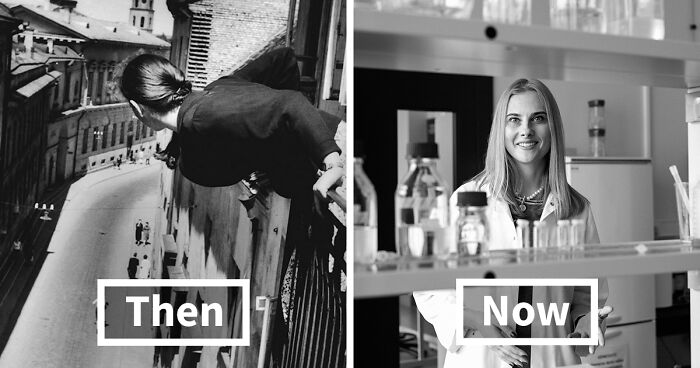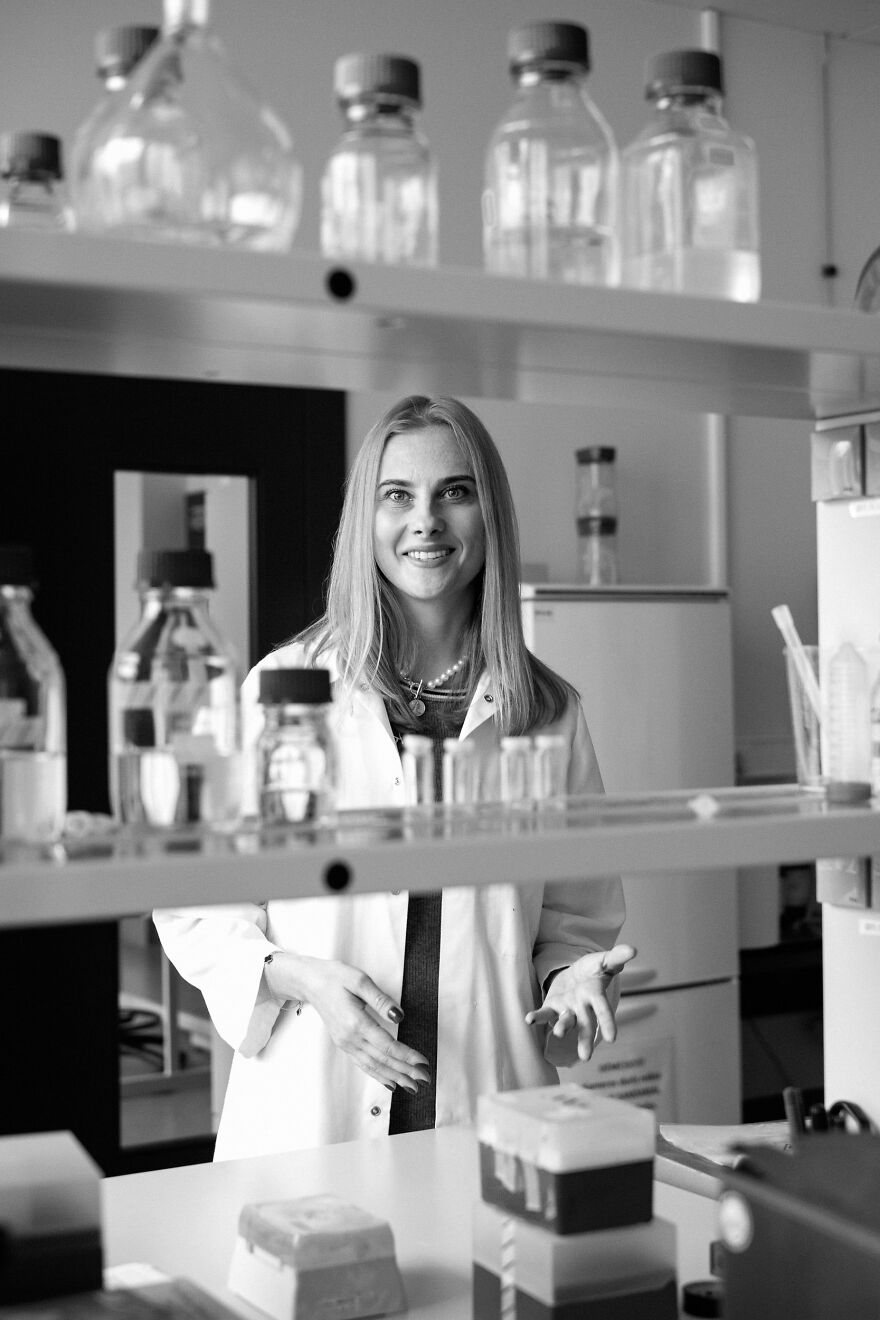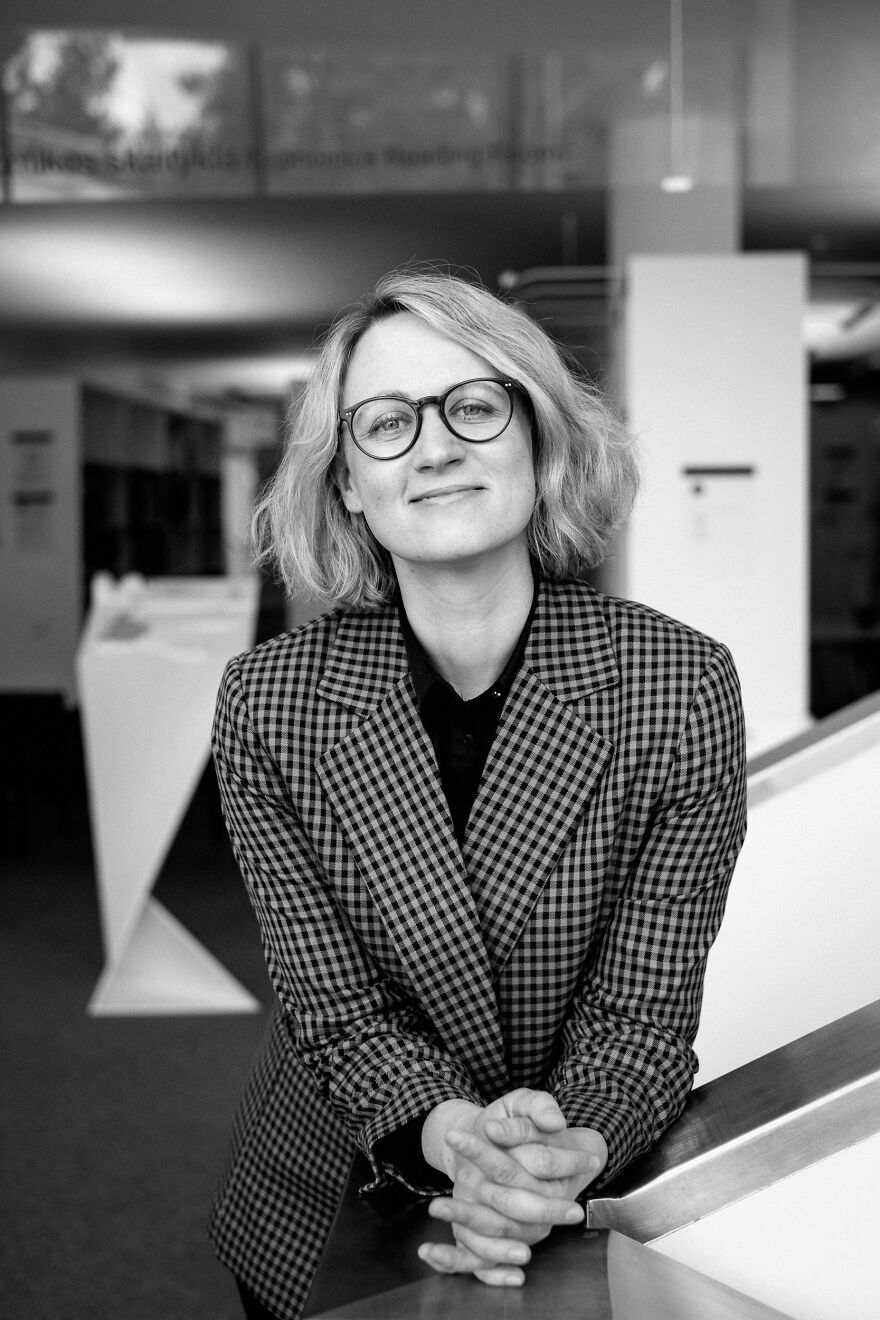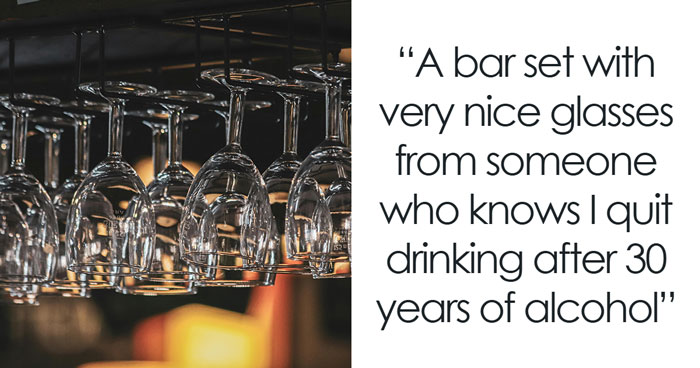
A Photographic Comparison Of University Life Across The 20th And 21st Centuries
Acclaimed Lithuanian photographer Antanas Sutkus began documenting the people of Vilnius University in the late 1950s when he became a student himself. Six decades later, young photo artist Artūras Morozovas, who calls Sutkus his teacher, was photographing the academic community. In this way, the present meets the past in the images of the University.
“Sutkus’s University is a world without routine: it has room for concentration but not boredom, intelligent laughter but not apathy or laziness. It is intensively inhabited, housing the scenography of old buildings with modern and at the same time-periodic physiognomy and plasticity,” Natalija Arlauskaitė, professor at Vilnius University, writes about the exhibition of photos by Sutkus and Morozovas, which takes place at Vilnius University.
These photos are captured by By Antanas Sutkus. Marathon on University Street, 1959
“Of course, this is one of the versions of the university idea, the university legend, told in the tone of admiring socromanticism,” Arlauskaitė adds.
First-years’ Christening, 1964
Sarbievijus Courtyard, 1965
In 1958, when Sutkus started studying at the University, the era of the youngest and longest-serving Vilnius University rector prof. Jonas Kubilius began. Soon the paths of the young artist and the prominent scientist crossed.
University Courtyard. Poetry Spring. Vilnius, 1971
Journey with Jonas Kubilius. Zervynos, 1971
Having learned that Sutkus was traveling around the Dzūkija region and photographing the local people, rector prof. Kubilius insisted on traveling with him. Photos taken by Sutkus show the rector explaining mathematical theories to ordinary people by drawing on the sand or simply talking about life.
Rector Jonas Kubilius. Vilnius, 1971
Philology Students, 1973
During their university years, Sutkus, who later was awarded the Lithuanian National Prize of Culture and Art, was documenting the moments of his personal life, too.
The University Celebrates the 400th Anniversary
Third Semester. Groups of Students Leave for Collective Farm, 1959
The photo “Marathon on University Street,” capturing his then-girlfriend, was taken from the 3rd floor of the dormitory. “I was strapped and held by the feet, leaning over the balcony railings. I only had 10 seconds to shoot,” the photographer remembers. Later this image became one of the best-known photos by Sutkus.
These newer ones are captured by By Artūras Morozovas. Professor at the Faculty of Physics Mikas Vengris
Dr. Inga Zakšauskienė, a lecturer at the Faculty of History
The new generation photographer Morozovas, who underlines the importance of humanism in photography, took a series of portraits of the current Vilnius University lecturers. The academics were photographed in their usual environment, while Morozovas himself engaged in conversations about science to make the lecturers forget about being in front of the camera.
Prof. Dr. Rimvydas Laužikas, Dean of the Faculty of Communication
Dr. Ieva Plikusienė, Associate Professor at the Faculty of Chemistry and Geosciences
Prof. Dr. Rimvydas Petrauskas, Rector of Vilnius University
Dr. Carmen Caro Dugo, Associate Professor, Institute of Foreign Languages, Faculty of Philology
Dr. Gintautas Tamulevičius, Associate Professor at the Faculty of Mathematics and Informatics
Prof. Renata Bilbokaitė, Director of Šiauliai Academy
Dr. Gintaras Valinčius, Director of the Center for Life Sciences
Dr. Jūratė Jaraitė-Kažukauskė, Associate Professor at the Faculty of Economics and Business Administration
Prof. Dr. Algirdas Utkus, Faculty of Medicine (HP)
11Kviews
Share on FacebookI was hoping it would be more of a comparison. It was not. The first half and the second half didn't relate to each other, except that they were from the same place.
I was in college in the 60s and 70s. It was very much like this. But since its tuition fees were a bit higher, out college was in color.
I was hoping it would be more of a comparison. It was not. The first half and the second half didn't relate to each other, except that they were from the same place.
I was in college in the 60s and 70s. It was very much like this. But since its tuition fees were a bit higher, out college was in color.

 Dark Mode
Dark Mode 

 No fees, cancel anytime
No fees, cancel anytime 






































































89
10